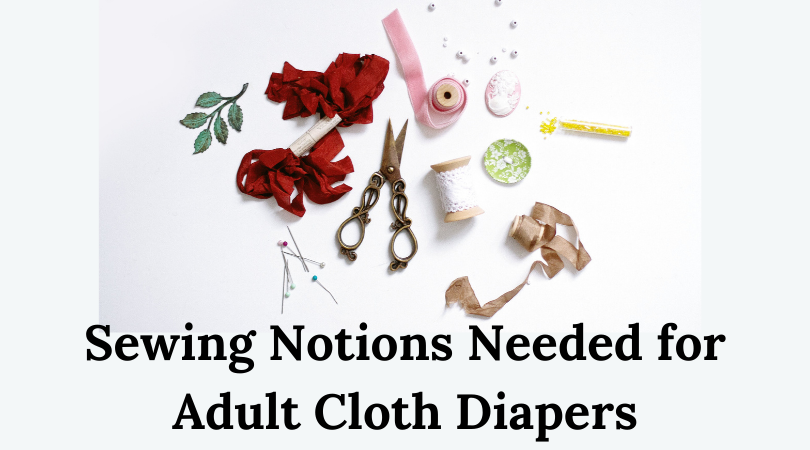So you bought some fabric and a pattern and you’re all ready to sew…right? If you’re like me, you’re a read-the-instructions-as-you-go without making sure you actually have everything you need on hand.
I’m also a measure-twice, cut-twice type of sewer, which needless to say, causes its own drama.
Honestly, how I’ve managed to create dozens of adult cloth diaper patterns and sew over 1000 diapers is beyond me. I guess practice really makes perfect!
Anyway, at least I get to dispense wisdom that I’ve learned the hard way, right!?
Soooo sewing notions.
Those pesky little things that get overlooked in the grand scheme of pattern and fabric. However, the reality is that those pesky little things will make or break your sewing experience. How many times have I said this so far? I really should make a list, though a list of 10 things that will make or break your incontinence wear sewing does sound kind of scary.
It really is supposed to be easy!!
But seriously, notions are VERY IMPORTANT. These sewing notions and accessories are critical to help you make an adult cloth diaper that functions well. Things like having the right needle and the right elastic make a ALL the difference.
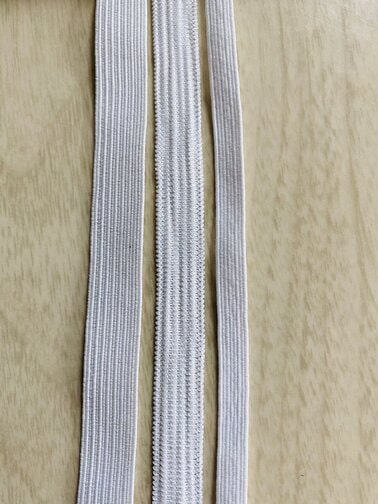
1. Elastic
I’ve used all types of elastic in my diaper sewing.
Braided. Knit. 1/2. 3/8. 1/4.
Trust me, they are not the same. AND telling the difference between knit and braided still drives me crazy after all these years. Even prepping to write this post, I had to triple check just to be sure I’m not going to tell you all the wrong thing. Ugh.
Moving on.
When sewing underwear items or cloth diapers, you want knitted elastic. This is key when you sew elastic on cloth diapers. You know you have knitted elastic when you stretch it and all those little squares appear. Knitted elastic is meant to be stitched down – preferably with a zig zag, though if you are serging a waistband on, that works too.
A straight stitch is never recommended with things that stretch because the stitches will break.
You can tell braided elastic because when you stretch it, you just get a bunch of long lines. This elastic is meant to be inserted in a casing. If you zig zag stitch it down, it will stretch out A LOT more than knitted elastic.
Trust me. I’ve done this and have compared the fall out. We’re talking a difference of several inches and when leg opening matters, you sure as hell better go with the tighter elastic.
What Size Elastic for Cloth Diapers?
Now does size really matter?
¼” vs. ⅜” vs. ½”
Functionally, in a fitted, pocket, AIO, leg openings, etc. I’ve found that the biggest difference between sizes comes down to ease of sewing.
When I have to stop and adjust my stitch width and length and put on my magnifying glasses to sew the miniscule line that a ¼” elastic becomes when stretched nearly to its max, it gets frustrating. And tedious. Really, why make things harder when they don’t have to be?
Now for the waistband. ¼” is soooo not going to cut it. Even with a front closure diaper that depends on wrapping around the body and attaching snuggly in the front, though it could work in a pinch, I do not recommend it. You could use ½” elastic for extra assurance that the diaper will stay up even when wet.
I use ⅜” elastic in all my diaper and incontinence underwear patterns. It’s easy to sew, not too bulky, and holds its shape and stretch.
Also, because I like things as simple as possible, my leg and waist elastic measurements are the same for my fitted diapers and I use ⅜” elastic for both. No double checking before sewing means one more mistake I don’t have to accidentally make.
Plus no one’s complained about their diaper falling down, so I have to assume it’s working just fine, lol!
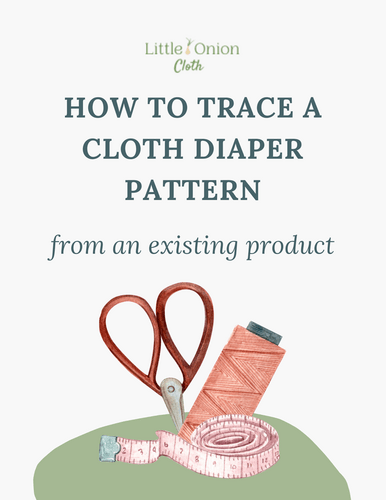
2. Fold Over Elastic (FOE)
I love fold over elastic (FOE). It’s soft and super easy to sew – not to mention fast to sew. And that 3 step zig zag stitch is da bomb.
A 3 step zig zag stitch is a zig zag stitch with 3 stitches for each 1 stitch on a regular zig zag. You simply put your machine on the 3 step zig zag setting and sew like a regular zig zag. Since FOE is usually folded around the edge fabric, having the extra stitches secures the elastic better.
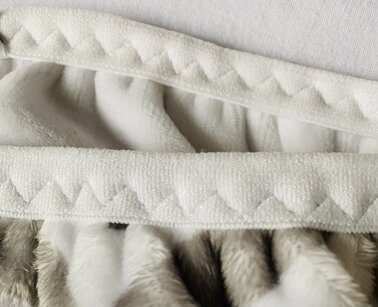
You will find FOE in cloth diapering as trim around a front closure diaper cover and on waistbands and leg openings for pull on diaper covers. Often, FOE is used on the gusset in pocket and AIO diapers.
However, that doesn’t mean it’s a perfect solution for everything.
For example, hook and loop tape (Velcro) and FOE are star crossed lovers.
You try to keep them apart, but somehow they get stuck together in the wash and you have to rip them apart with disastrous results. AKA, hairy, fraying elastic over time.
ALSO, FOE around the leg openings is fine, but note that it does have a tendency to wick moisture.
Which FOE Size to Use?
Fold over elastic comes in ½”, ¾”, ⅝”, and 1”.
They are not all created equal.
Seriously, they are not created equal. Some of them are created for making headbands and hair ties out of, so they’re super stretchy and not meant to hold up the weight of anything heavier than a strand of hair.
They might work on a leg opening, but I do not recommend it. Besides, sewing a 3 step zig zag on a ½ foe is a recipe of nightmares. Trust me, I occasionally use ½” or ⅝” to trim the necklines and sleeves of my daughter’s nightgowns and it’s almost more trouble than it’s worth.
Sooo, use 1” FOE.
But don’t use just any 1” FOE.
Once when I was desperate, I bought a bunch of black 1” FOE from someone on Etsy and it was so thin and stretchy that I knew it would not be holding up a cloth diaper anytime soon. I ended up returning it and going to Joann Fabric where I bought Dritz FOE.
Dritz FOE, btw, is excellent. It’s very sturdy and retains its stretch. I do find that it’s a little too heavy for leg openings, but it’s great for trimming a front closure diaper or for waistbands on pull on diaper covers.
So buy FOE that has been labeled for use on cloth diapers. Babyville sells some good quality stuff, as does Wazoodle. Dritz FOE is very sturdy and also works well, but only comes in black and white.
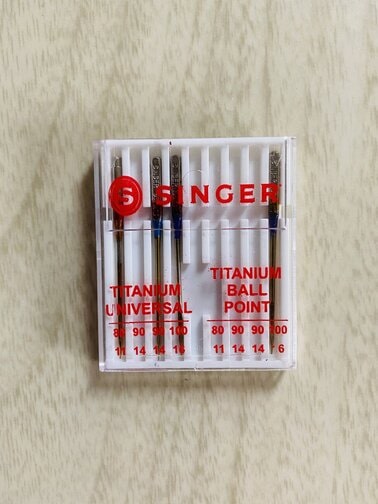
3. Needles
When in doubt, go Universal.
Sharps do not have a place in diaper sewing. I used to use sharps when sewing PUL, but not only do they skip like crazy – lord help me, I HATE skip stitches and PUL is particularly prone to that – PUL is considered a knit fabric so the sharp points can actually break the fibers, weakening the fabric and cause leaking.
Come to think of it, many of the fibers used in cloth diapering are knits. Knits need ballpoint needles or universal because those needles have rounded ends which push aside the fabric threads rather than slice through them.
If you’re curious about the differences in needles, Threads Magazine has a nice comparison.
Now don’t get scared away by the words “knit fabric.”
Lucky for you, most of the knit fabrics used in cloth diaperinig are of the mildly stretchy, sturdy sort and actually sew quite nicely on a regular sewing machine with regular feet.
Besides, sharps are best used for sturdy, heavy weight, woven material. Diaper twill, birdseye, gauze, and flannel are not heavy, sturdy material even though they’re woven. So just get Universal or ball point needles. They won’t do you wrong.
Also, if your needle starts skipping stitches like crazy, change it.
Maybe even clean your bobbin area and re-thread your machine while you’re at it. One of those almost always solves the issue of skipped stitches or knotted thread/rats nests on the underside of my fabric.
4. Teflon Sewing Foot
If you’ve ever struggled to sew PUL because it kept sticking to your presser foot instead of sliding nicely through your machine, it’s not you, it’s your presser foot.
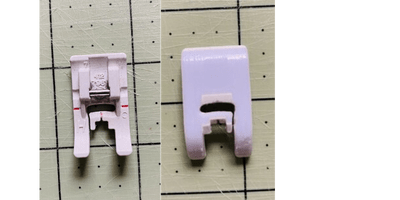
Metal and fabrics with sticky coatings on them like vinyl and PUL don’t work together. They’re more like oil and water. They just don’t mix.
So what are you to do?
The day I discovered my machine’s plastic foot, I swear the heavens opened and the sun smiled down on me.
I was also flabbergasted that it took me 5 years of owning my machine to realize that those other presser feet outside of the regular and zipper foot are actually really useful!
Anyway, PUL doesn’t stick to a teflon presser foot, enabling you to sew PUL like a normal human being instead of an alligator wrestler.
But what if you don’t have a plastic presser foot?
You could, of course, buy one. They’re really cheap.
But if you really need a solution RIGHT NOW, sometimes machines come with sticky felty things that you can put on the bottom of your metal presser foot. Or if you have contact paper laying around, you can cut a piece the size of your presser foot.
If you don’t have either of those things and you’re really desperate, you could try scotch tape or packing tape.
Again, cut it to the size and shape of your presser foot and give it a whirl.
Tape is not a long term solution, though, so I highly recommend that you buy an actual teflon foot. They’re super cheap and will come in handy in all sorts of sewing situations. Win-win.
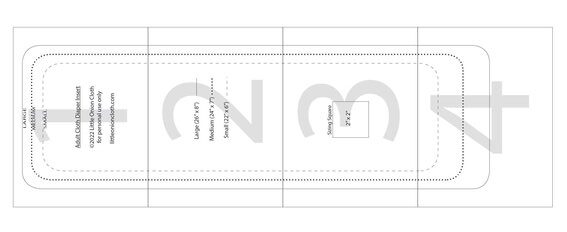
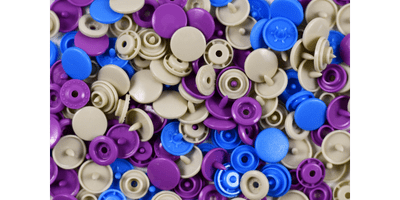
5. Snaps
You have probably been bombarded with Babyville vs. Dritz vs. KAM. Oh! And size. 16, 20, 22, 24…not to mention, plastic or metal?
I used Babyville snaps for years and there’s absolutely nothing wrong with them. Well, except for the fact that it seems they are no longer in business…. When I lived in the city, I would go to Joann so often that I was on a first name basis with the ladies at the cutting counter AND they would ask about my kids by name when they weren’t with me.
I always used coupons so the Babyville snaps were affordable and convenient, though my stash of extra studs really annoyed me. It really is too bad that Babyville Boutique is being discontinued. Their PUL prints were by far the most popular in my shop.
I didn’t switch to KAM until I bought a table press. After snapping hundreds of diapers with the hand tool, I definitely deserved to have a grip of steel. Alas, I only got a sore hand out of it.
The table press – next to the serger – is the best tool I splurged on for my business. But at almost $100, plus it’s big and heavy, I recommend only investing in it if you plan to snap, well, everything.
As for Dritz…
Do not bother with Dritz snaps.
- they come in small quantities (expensive)
- Plastic ones are hard to find
- Color choice doesn’t exist
- MOST diaper brands use KAM so Dritz snaps are not compatible with well, any other diaper.
Which Snap Size to Use in Adult Cloth Diapers
You’ll need to know snap sizing to know how to make cloth diapers with snaps. Babyville and KAMsnaps ARE NOT EXACTLY the same size, btw. So they’re not really interchangeable.
Standard baby cloth diapers use size 20 KAMsnaps. Standard adult cloth diapers use____. For adult cloth diapering, the use of either size 20 or size 22 works well.
I use size 22 KAMsnaps on my diapers because I find that the slightly larger snaps are a little easier to snap and are a little stronger than size 20. But since size 20 is more readily available and has more color choices than just black and white (sorry 22), using size 20 won’t do you wrong for adult diapers.
No need to bother with size 16. Why torture yourself with tiny, hard to snap snaps?
Snap Colors
KAMsnaps not only come in every color of the rainbow, they come in multiple variations of every color of the rainbow.
In fact, Kamsnaps.com apparently carries 115 different colors of size 20 snaps. Mind. Blown.
Plus, you can buy Kamsnaps in quantities of 50, 100, 1000 AND some places sell them by the parts! Bye bye extra studs that I can do nothing with!
Side note: for size 22 snaps, I have to custom request the purchase of separate snap parts from Kamsnaps.com. They have great customer service, though!
Babyville offers some variety in color, but they only come in quantities of 20. That’s one diaper. If you use a 50% off coupon at Joann Fabric, the price per snap is comparable to KAM, but you’ll still end up with extra studs.
If you’re planning on making a lot of diapers, I highly recommend KAMsnaps, but for small projects, Babyville works just fine.
Just remember, you have to buy the pliers for either KAMsnaps or Babyville and they run $16-$20 each.
Should I Use Metal Snaps on Cloth Diapers?
No.
I know, I know. Those pearl snaps are just so stinkin’ cute and would look AWESOME on a diaper. I feel your pain because I’ve thought about it too.
But it’s not a good idea.
For one, metal snaps have teeth. Those metal teeth bite into the fabric and attach to the metal ring behind. Plastic snaps only make one hole in your fabric. PUL doesn’t like holes. Holes in PUL are like little drafty windows for moisture to leak out of.
You don’t want holes in your PUL.
Also, the metal snaps can beat up your diapers in the wash, causing them to wear faster. You want them to last, right? Your washing routine has a big impact on the wear of your diapers.
6. Hook and Loop Tape (Velcro)
Now that we’ve talked about snaps, we need to talk about Velcro – I mean hook and loop tape. “Velcro” is a trademarked word, so using it can be tricky…
I happen to use a Velcro brand 2″ hook and loop tape, which works great. In the beginning I used 1.5″ hook and loop tape and customers complained of the diapers not holding up, so I switched to 2″. You could also go 3″ if you wanted.
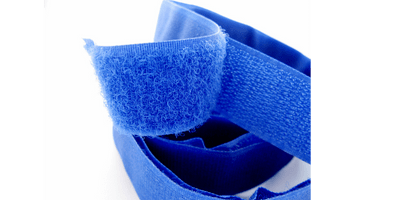
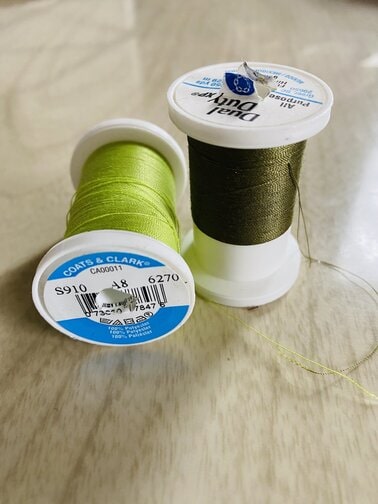
7. Polyester Thread
Lastly, thread. Or more specifically, polyester thread.
This is important because cotton wicks moisture and you don’t want to have anything in your cloth diaper or incontinence underwear item that will unnecessarily wick moisture.
Luckily, most all purpose thread is polyester, so it’s not hard to find. If you’re in doubt, simply check the fiber content of the thread before you buy it.
Using the right notions, aka elastic and snaps, on your diapers and attaching them correctly will make your diaper sewing experience much more enjoyable and the final product functional and durable.
Happy sewing!
Related terms for this sewing incontinence products article: incontinence garments, sewing incontinence garments, cloth diaper material list, diaper sewing supplies, cloth diapers for beginners, best elastic for cloth diapers, best snaps for cloth diapers, stitch fold over elastic for cloth diapers, stitches thread for cloth diapers, pul teflon presser foot, sewing machine needle for cloth diapers
Alecia
Latest posts by Alecia (see all)
- How to Make a Cloth Diaper Bigger - August 21, 2023
- Best Swim Diapers for Adults and Youth - July 18, 2023
- Adult Cloth Diaper Hacks: How to Make a Swim Diaper - July 14, 2023

